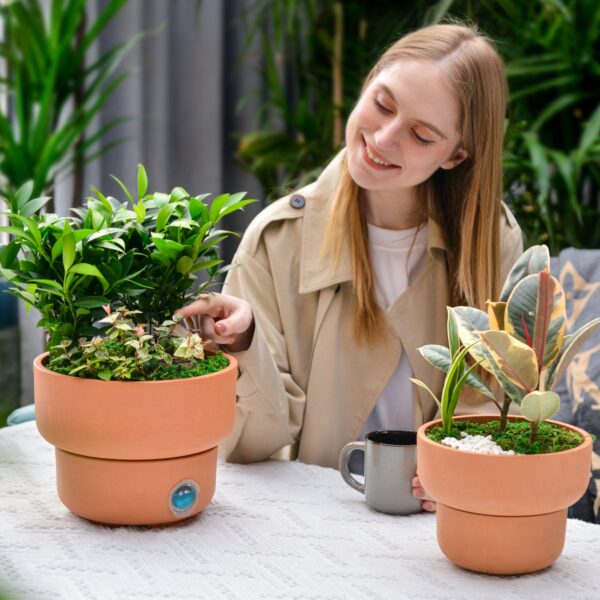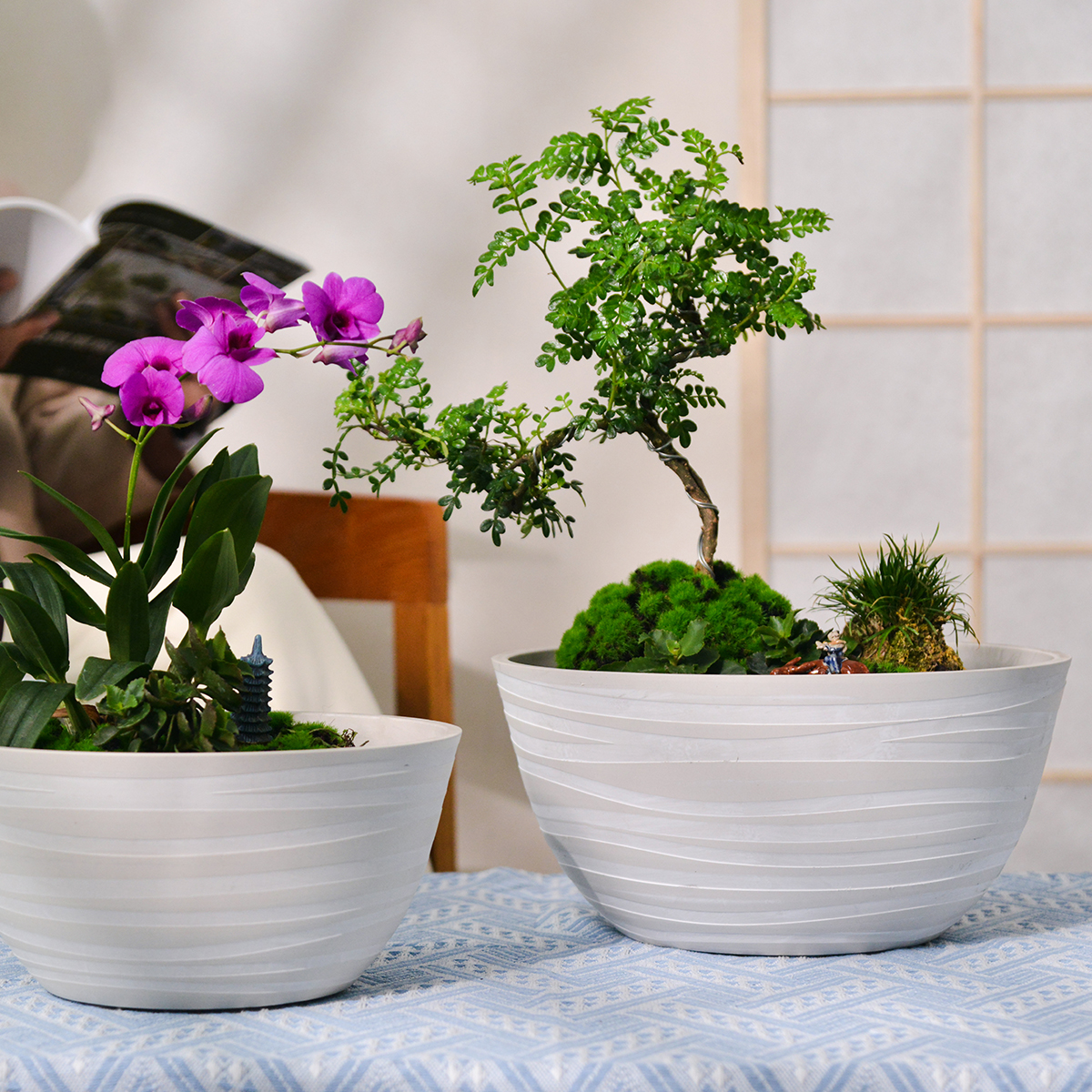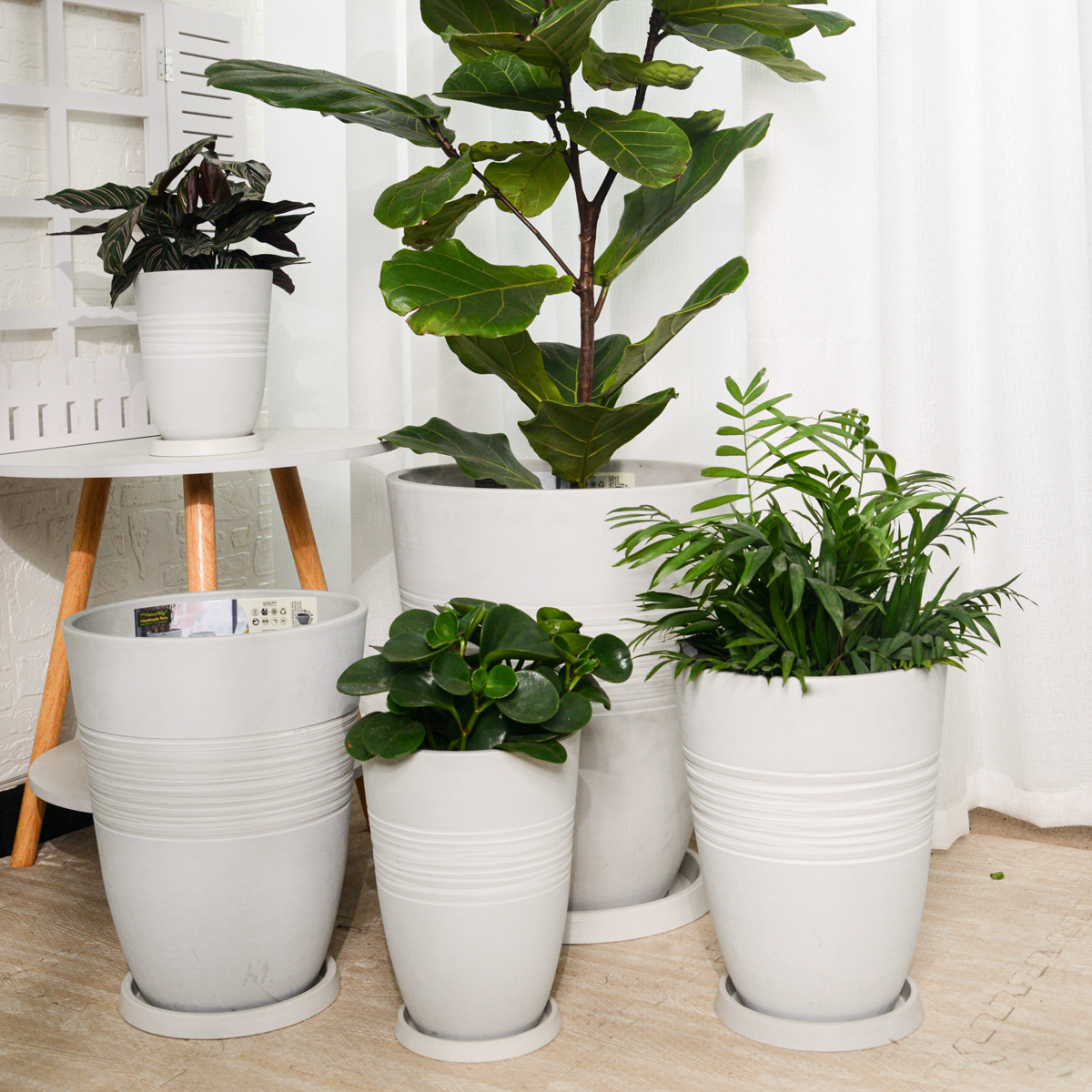What is the Difference Between a Planter and a Cachepot?
The primary difference between a planter and a cachepot lies in their function and design:
Planter:
- Definition: A planter is a container that is specifically designed to hold soil and a plant. It often includes a drainage hole at the bottom to allow excess water to escape, preventing root rot.
- Purpose: Planters are intended for growing plants directly in them.
- Material: Planters can be made from a wide variety of materials such as ceramic, terracotta, plastic, wood, or metal, and are built to hold soil and provide proper drainage.
- Example: A flowerpot that you use to plant flowers or herbs, which you fill with soil.

Cachepot:
- Definition: A cachepot is a decorative container used to hold a planter. It does not have a drainage hole and is used primarily for aesthetic purposes.
- Purpose: Cachepots are designed to hold a pre-planted pot (planter) and typically sit on top of a planter to enhance its visual appeal. The idea is to hide the functional planter inside.
- Material: Cachepots are usually made from decorative materials like ceramic, metal, or woven materials, and are often used as an outer decorative layer.
- Example: A decorative ceramic pot placed over a plastic or terracotta planter to hide it and add a stylish touch to your home décor.

Summary:
- Planter: A functional container with drainage, used to grow plants directly.
- Cachepot: A decorative cover or holder for a planter, often without drainage holes, used to enhance the aesthetic of the planter and the plant.
In essence, while a planter is meant for the plant itself, a cachepot is a purely decorative element that helps showcase the planter in a stylish way.
20VD
By greenship|2024-08-13T06:43:41+00:00August 13, 2024|Categories: Hand-carving Series|
KC2-11VH
By greenship|2024-08-16T06:19:28+00:00August 16, 2024|Categories: Hand-carving Series|
11V
By greenship|2024-08-13T03:05:48+00:00August 13, 2024|Categories: Hand-carving Series|



